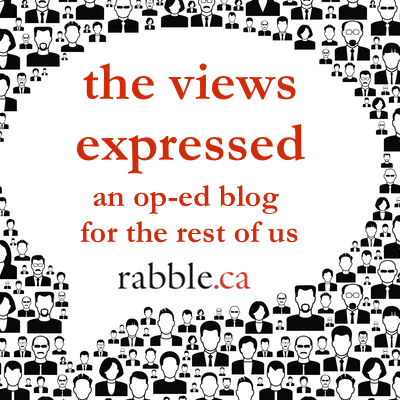One hundred years after the First World War, the world’s strongest military alliance is responding to hostilities in Ukraine by bunkering down in Europe.
Prime Minister Stephen Harper will fly to Newport, Wales for the North Atlantic Treaty Organization’s 2014 Summit on September 4 to 5. There, political leaders and military brass from NATO’s 28 members, amidst attendees from an additional 32 countries, will carve out polices that will chart Europe’s course for the years ahead. This summit marks a crossroad for the Alliance, for as it works to reaffirm its hegemony over Europe, it will also have to decide whether it wants to stay a warring hawk or evolve into a peaceful dove.
In late March, NATO announced that Jens Stoltenberg, Norway’s ex-Prime Minister will head up the Alliance after the current Secretary General Andreas Fogh Rasmussen’s term ends in September. Not only is Stoltenberg more diplomatic than the hawkish Rassmussen, he will also be the first the first NATO Secretary General from a country bordering Russia and surely the only one to have ever hurled rocks at a U.S. Embassy.
In 2011, Stoltenberg resolved a four-decade dispute between Norway and Russia through negotiations over their Arctic maritime borders and established a personal friendship with then-president Dmitry Medvedev. “If the task for NATO now is to defuse the crisis with Russia over Ukraine, then Stoltenberg will be [instrumental]. He thrives on compromise. If the task is escalation, he won’t be bad, but there are others who could do a better job,” said Frank Aarebrot, professor of comparative politics at the University of Bergen and an acquaintance of Stoltenberg.
“The conflict in Ukraine must be [resolved with] a political solution… We will not live in a world where the strongest one prevails,” Stoltenberg said.
Given the importance of this summit, Canadians cannot allow another embarrassing episode of The Stephen Harper Show to broadcast its ‘principled’-bullhorn-diplomacy that promotes outdated, counterproductive military responses to complex international problems.
This year’s summit will be about one of two things: ramping up defence spending in order to remilitarize Europe, or transforming the bullish juggernaut into something more suitable to the 21st century. Arms makers, senior military brass and defence hawks in Ottawa, Washington and Brussels will be pushing for the former, it’s up to us, the people NATO claims to protect, to fight for the latter.
Throughout the year NATO members have been renewing commitments to increase defence budgets, while sending ‘reassurance packages’ to anxious members east of the old Iron Curtain. Now is the time for people to unite in support of the opportunity a dove like Stoltenberg presents, by pressing our leaders to work for peace. Otherwise, hawks like Harper and Rassmussen will bind the alliance to a costly, long-term remilitarization of Europe, before Stoltenberg gets a say.
Harper has not shied away from renewing Canada’s ‘transatlantic bond’ with our European allies through military posturing, nor has his approach to dealing with Russia been in any way subtle or reserved. But through it all, Harper has shown he is mainly bark with little bite.
As the crisis in Ukraine unfolded, Harper — with few Canadian economic interests at stake and his eye on the large Ukrainian-Canadian community — was one of the most belligerent ‘world leaders’ responding to Russia.
In March, Harper pushed to oust Russia from the G8 and shouted for sanctions in the face of Russia’s “militarism and expansionism” in Crimea. In April, he declared he was sending six antiquated, unarmed, CF-18 fighter jets to Romania. Come May, Harper boasted he was sending an anti-submarine frigate, the HMCS Regina, to the eastern Mediterranean Sea, some 1,500 km from the Crimean Peninsula.
Following, I imagine, a brief consultation with an atlas in June, Harper announced the deployment of 75 soldiers to Latvia — not a neighbour to Ukraine like Romania, but back in Europe at least. By July Harper was thinking forward to August, when our training mission in Romania expires, so he pledged to send a half-dozen more outdated fighter jets to Lithuania, to join NATO’s air patrols over the Baltic members’ border with Russia. And just a week ago, he announced Canada was sending $5-million worth of (non-lethal) military equipment to help defeat pro-Russian rebels in Eastern Ukraine, amidst continued complaints from Ukraine’s government that Harper hasn’t made good on the $200-million aid package it promised five months ago.
Is it really helping the Ukraine for Harper and NATO to spend millions of dollars to boost the militaries of its European neighbours? Are their actions oriented towards conflict resolution or warmongering? Are hawkish leaders like Harper focused more on boosting arms sales rather than on defusing hostilities? In the end Ukraine must find a way to live with both Russia and Europe. Inspired diplomacy is urgently needed to allow both sides to climb down from the precipice.
Arms manufacturers like Lockheed-Martin and Raytheon Corporation are profiting immensely from Harper’s military policies. Canadians cannot afford to have Harper derail the NATO Summit. The Alliance is at an important juncture where it must choose between restoring a peaceful European order and rearming the continent for a new Cold War.
Leaders like Stoltenberg can have a major impact in reshaping an organization’s direction. But the policies the Alliance formulates in Newport, Wales will surely direct the path Stoltenberg can take. It is therefore immensely important that Canadians call on NATO leaders to give the incoming Secretary General a strong mandate to support resolution of the ongoing confrontation with Russia in the only way it ultimately can be resolved — politically, not militarily.
It is time for NATO to shed the claws of a hawk and grow the feathers of a dove.
Celyn Dufay has been a campaigner and donor service officer for the Rideau Institute and blogger for Ceasefire.ca since June 2013. He’s starting a Master of Industrial Relations at Queens this September.



